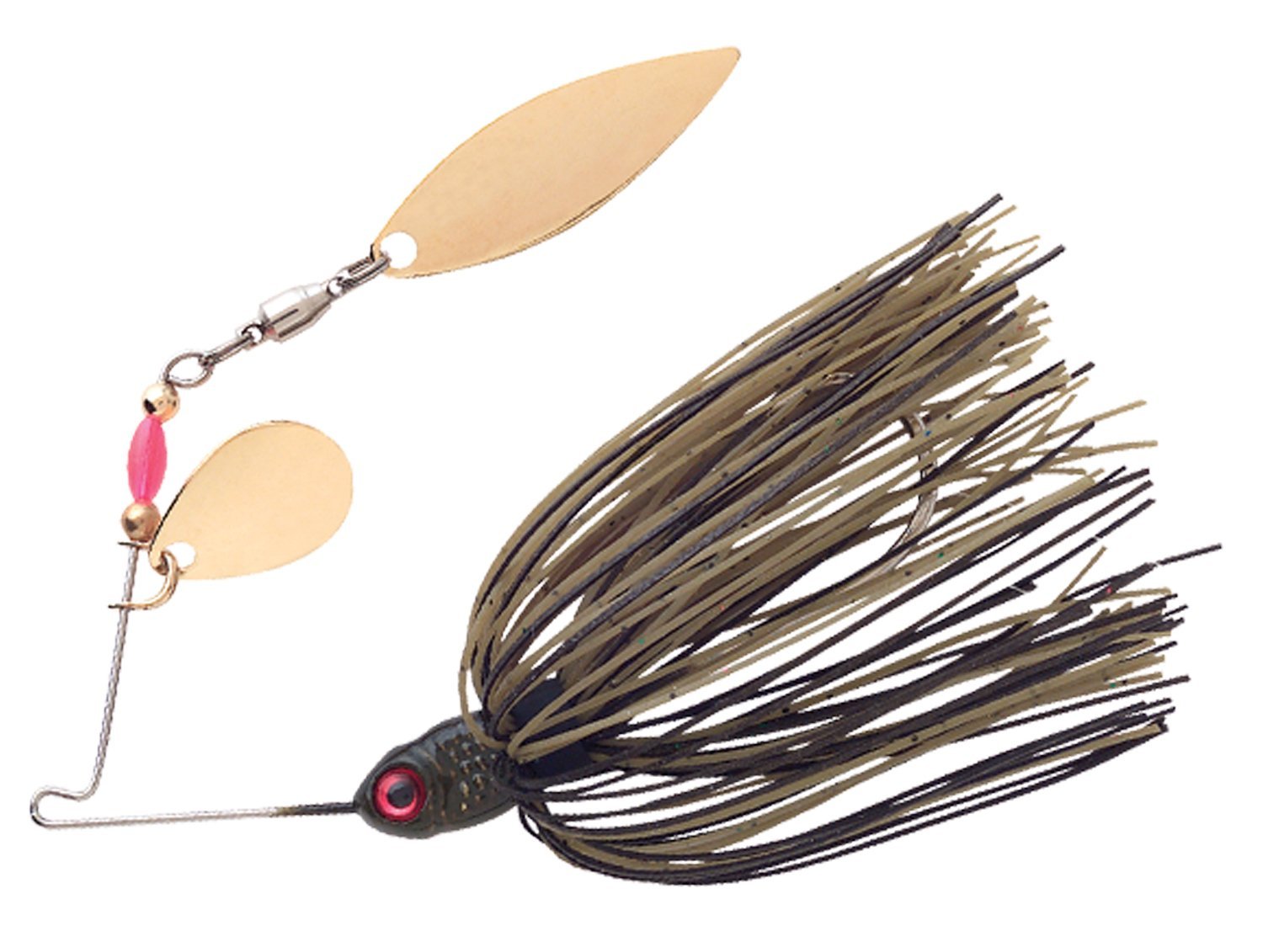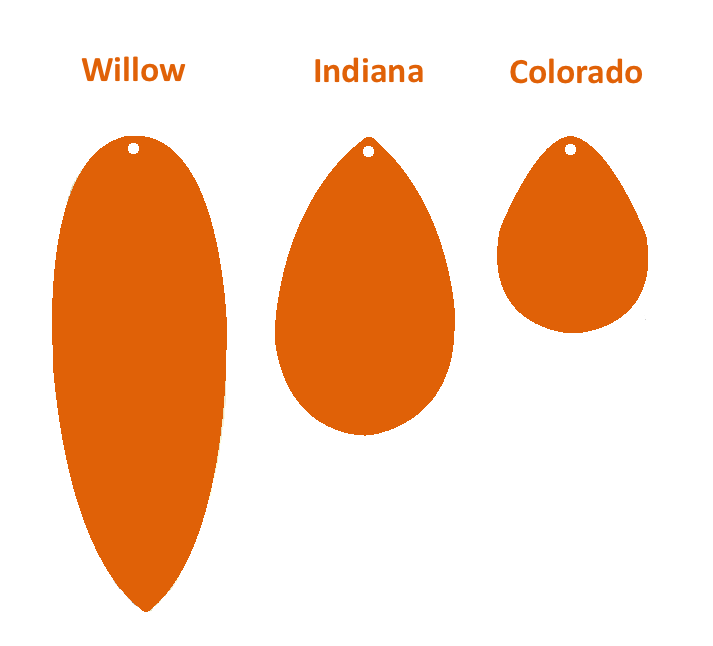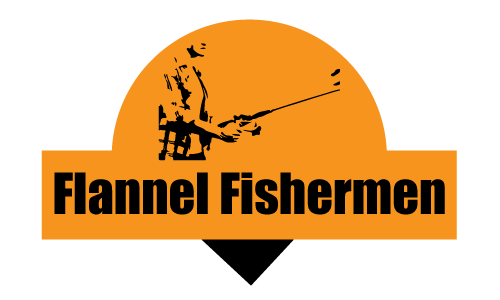How to Use a Spinnerbait Lure

In our recent article outlining some of the best lures for bass fishing, we selected spinnarbait lures as one of the top options for a variety of reasons. One thing we didn’t touch on in detail was how to effectively work a spinnerbait. Lots of people think they may be able to figure it out, which is probably correct, but if you want to learn in an efficient manner and be successful sooner rather than later, then it definitely helps having a few tips. Moreover, in addition to learning about a particular fish species’ habits, knowing how to properly work a particular lure can provide further assistance in selecting the proper bait for any given situation.
Therefore, in this article our primary goal is to provide information on the different components of a spinnerbait, how each of those components effects the action, retrieval, and ultimately attracts fish, and then of course flannel fishermen and his team will discuss how to work a spinnerbait in detail.
What Size Spinnerbait Should You Use?
A common answer to many questions about lure selection is “it depends”, and the same holds true here. What works for one angler may not work for another, but there are general guidelines for selecting the proper spinnerbait that can help provide a good starting point.
If you simply want to stock up on a size that is the most robust in terms of applicability, we would go 3/8 oz, as this provides a “medium” size that can achieve success in most situations.
If you want to refine you size selection a little more, we would consider season and water temperature. During early season, especially pre-spawn for bass, most sizes will work, but the smaller sizes will be more likely to work during this time of year than later in the season. Even the large bass will bite the little spinners without hesitation. The main reason for this is that they are much more active pre-spawn and the water is warmer, so they have the energy to nab anything that passes by them.
If you want to practice your angling skills in a fun way, try pairing a small spinnerbait with scaled down gear, like a smaller rod or an ultralight spinning reel. This will allow you to cast with finesse and really pick your spots!
Later in the season, especially in the Fall, you may want to opt for larger spinnerbait lures and retrieve them a little more slowly, as the fish will be less active during this time, especially if the water is cold. Larger spinners may also help with catching the heavier smallmouth bass.
Parts of a Spinnerbait
Here is an image of a spinnerbait lure with all the components labelled. We will discuss these components below.

Spinnerbait Blades
When selecting which spinnerbait to use, many people place an emphasis on size and color (we will discuss this further down). While these are definitely crucial aspects that contribute to properly working a spinnerbait, perhaps the most important component to a spinnerbait lure are the blades.
The blades are used to further attract fish. The vibration and reflection will grab their attention, and it’s thought that they will also induce an instinctive reaction into the fish, especially bass, that makes them bite. One of the theories behind this is that the blades mimic smaller fish being chased by the larger fish (head, skirt, and hook), ultimately prompting the the bass (or other species) to strike quickly.
There are lots of different types of spinnerbait blades, but there are three main ones that are by far the most common. Where and what you plan on fishing will affect which blades are the most appropriate.

Willow Blades
Also known as “willowleaf blades”, these are probably the most common blades you will see. Many spinnerbait lures come with at least one of these, but are also often seen in tandem. The spinnerbait in the picture with all the parts labelled is also a commonly seen combination, and in this case, the front-running blade is a Colorado blade, and the back blade is a willow blade.
Willow blades usually come in sizes 3-6, where size 3 is usually about 1.5″ in length and 0.5″ in width, whereas a size 6 would be closer to 3″ in length and 1.0″ wide. Sizes 4-5 are the most common, especially when fishing for bass. Size 4-1/2 is generally considered a “threshold size” whereby under this threshold is best for smaller spinnerbaits (1/4 oz, 3/8 oz), and anything above is likely better for larger spinnerbaits (1/2 oz and up).
Given that willow blades are the most streamlined and therefore hydrodynamic, they are less effected by the force of the water. Therefore, in order to spin efficiently, they need to be moved through the water at higher speeds. When they spin, they tend to reflect light more strongly than other blade types, but they also create less vibration. Also, they are great for attracting fish closer to the bait, as the faster spin makes them extra appealing.
Colorado Blades
For the sake of simplicity, one can consider a Colorado blade the opposite of a willow blade. For a given size, Colorado blades are much wider and shorter than willow blades and feel the force from the water acting on them much more strongly. Therefore, they will spin at much slower speeds and also produce a stronger vibration. For this reason, many anglers choose to employ at least one Colorado blade on their spinner in colder waters or in any situation when visibility is low, such as in murky water or in/around heavy cover.
In terms of size, the common ones are fairly similar to the willow blades. Colorado blades usually come in sizes 2-5, with 3-5 being the most common. A general consensus is that the smaller the spinnerbait, the smaller the Colorado blade, but you can adjust this based on speed of retrieval as well.
If you are fishing unfamiliar waters and are unsure of what type and size of blades to employ, we would suggest using a mid-sized Colorado blade as a front runner (maybe size 4), and willow blade as the back blade (maybe a size 4-1/2). This gives you an all-encompassing action that should attract something.
Then, based on the areas where you are having the most success, you can further refine your blades to be more optimized for that situation. For example, if you find you’re catching a lot of bass near heavy cover in murky water, maybe you will want to sub out the willow blade for another Colorado blade that will produce a much larger vibration. However, there aren’t any strict guidelines for blades, so this is something that will very between anglers and situations. At the end of the day it just takes experience in many different conditions for you to develop a personal preference.
Indiana Blades
So where to Indiana blades fall in? Well, the main reason for their existence at this point is to bridge the gap between willow blades and Colorado blades. For any given size, an Indiana blade will have a length and width between the other two types of blades.
Indiana blades are not very common, especially in tandem, but that doesn’t mean they aren’t effective. The reason many people opt for the other two, is to hit the extremes of blade spin, flash, and vibration. If you are using a Colorado/Willow tandem, you have the high vibration, flash, and spin. If you use two Indiana blades in tandem, you basically have “medium” levels of everything.
Keep in mind this isn’t always a bad thing. We like to think we can pinpoint exactly what type of stimuli will attract fish, but the fact is that this will change day-to-day and location-to-location. Sometimes when something works we don’t know why and we just have to go with it. Therefore, don’t shy away from using Indiana blades. In fact, if you are curious enough about the differences between the three main types of blades, we would recommend trying all three separately and in tandem. You may develop a personal preference based on your personal success, or it’s entirely possible you won’t find much difference. In any case, we recommend having all three available in some form.
Summary of Spinnerbait Blade Types
Willow
- Long and narrow
- Fast retrieval
- Stronger flash
- Lower vibration
Indiana
- Medium size
- Varying speed
- Medium flash
- Medium vibration
Colorado
- Short and wide
- Slow retrieval
- Higher vibration
- Weaker flash
Check out the video below for some great tips provided by Kevin VanDam. He covers a quite a bit about how to properly work spinnerbaits, but pay particular attention to his tips on single versus tandem blades, as well as using a trailer hook.
What Color is Best for Spinnerbaits?
Unfortunately, the best color scheme for a spinnerbait depends on a wide variety of factors, many of which can change even while you’re on the water. That being said, there are some general guidelines that can help increase your chances of success, but ultimately you will develop a personal preference based on your local conditions and history of success.
One reminder that could help is that spinnerbaits are meant to mimic a fish (head/skirt) chasing smaller prey (blades). Therefore, a good starting point is to use simple natural color schemes in clear water that are similar to natural prey, for example, a shad color scheme could work well. Or, if we were only allowed to have one spinner in our tackle box and it had to have a solid color, we would choose white.
Also, in clear water the fish can detect finer detail on the spinner, which can work to your advantage. For instance, many anglers find it helpful if the eyes on the head of the spinner provide contrast to the rest of the head. These finer details may only make a difference in clear water.
In murky water, you may need a little more help with the visibility of the spinner. In this case, you may want to start out with a slightly brighter color scheme like chartreuse. Solid black can also work well because it provides nice contrast in any water, and if the fish see the bait above them, they won’t see much reflection off of the bait anyway as they are technically in its shadow. So it isn’t all about reflection, but instead, reflection AND contrast, whereby you want to provide enough to make the spinner detectable, but not so artificial that it appears completely unnatural to the fish (especially bass).
In our opinion, it’s best to think about water conditions and local environment (e.g. grass, weeds, stumps, ope flats, etc) when selecting a spinnerbait. Light conditions definitely have a large contribution (e.g. bright and sunny, or rainy and cloudy). However, light conditions can vary dramatically even in the same location on the same day. Clouds overhead, shadows from vegetation, any sediment in the water, and precise location of the fish can all affect the lighting conditions, so it makes it way harder to accurately predict.
How to Properly Work a Spinnerbait
Ok, now that we feel a bit better about the size, color, and blade types we should use for a given situation, how should we actually use the spinner so that it’s most effective? Most of this is covered in Kevin VanDam’s tutorial that we posted above, but here are some more details to consider.
One of the main strengths of a spinnerbait is that they are very castable, can be retrieved at varying rates, and are reliable in many situations especially when fishing bass. This makes them ideal as your starting lure for the day if you want to cover lots of range and gain an overall understanding of the local waters.
Considering the information we provided above, we would suggest using smaller spinners early in the season or when fish are very active. In this case, start out with long casts and fast retrievals. Active bass will be more than willing to jump out and bite a fast moving spinner, especially largemouth bass, while at the same time allowing you to test a few different spots relatively quickly.
If the water is colder, it’s later in the season, the fish are much larger, or they are just generally more lethargic, it’s probably best to start out with a larger spinner bait (3/8 oz and above). You can still cover a large range with a long cast, but in this case you want to make it a little easier on the fish to bite. Therefore, try a slow retrieval that is just fast enough to make the blades spin. You can also employ a slight jig-style retrieval, allowing the spinner to sink and potentially bump off the bottom while you retrieve it. This will cater a little better to the big small mouth bass that may come up from further depths to grab the bait.
